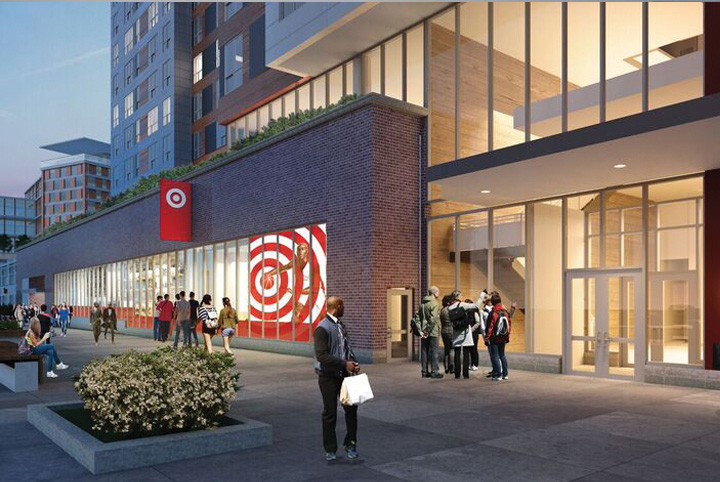
By Rick Haglund
Major discount retailers that long profited by erecting large-format stores in the suburbs are going small.
Meijer, Target and others are zeroing in on underserved urban markets and college towns with smaller-format stores that are a fraction the size of their mammoth supercenters.
The move to smaller stores is a result of emerging trends, including growing urban populations, a saturation of retail in the suburbs and more online shopping.
“If I’m a Meijer, how am I going to grow my business? I’m everywhere I want to be in suburbia,” said Cindy Ciura, principal of CC Consulting, a retail consulting firm in Bloomfield Hills.
Meijer is building two small-format stores in Michigan. A 37,000-square-foot store that Meijer calls Bridge Street Market is scheduled to open in Grand Rapids later this year. The typical Meijer store is about 200,000 square feet.
The Walker-based retailer also announced it will open a 42,000-square-foot store as part of a $60 million mixed-use development along the Detroit River on the city’s east side in 2019.
Target operates 59 small-format stores, including 13 near college campuses. It’s planning to have a total 130 such stores open by the end of 2019.
The Minneapolis-based retailer has announced it will open a 22,000-square-foot store in East Lansing’s $135 million Center City development, which also will contain 365 apartments, in 2019. The typical Target store is about 130,000 square feet.
Target’s new store will offer those living in downtown East Lansing something that urban dwellers in other cities often lack—groceries. The store also will carry cosmetics, personal care items, men and women’s clothing, and a selection of home décor items aimed at dorm and apartment residents.
“You’ve really created an investment in Center City with a grocery option that encourages high-density urban downtown living,” said Steve Willobee, chief operating officer of the Lansing Area Economic Partnership.
Target has no plans for additional small-format stores in Michigan, but is “always looking for possible new locations, including Michigan,” said spokeswoman Jacqueline DeBuse.
Other retailers, including Art Van and Kroger, have built some small-format stores. Kohl’s has shrunk the size of 300 of its stores and is looking for a grocery partner to fill the empty spaces.
Growing urban populations of young people and empty nesters, especially in downtowns, have attracted the attention of retailers.
The cities of Detroit and Ann Arbor led all 233 Southeast Michigan communities in the number of new residential unit permits in 2016, according to the latest available data from the Southeast Michigan Council of Governments.
Ninety-four percent of those units in Detroit were apartments or lofts while 85 percent in Ann Arbor were apartments.
The city of Grand Rapids issued permits for 2,542 housing units in the two-year period of 2016 and 2017, up 51 percent from 1,681 permits issued in the 2014 and 2015 period.
Opening urban stores can be more expensive and complex than building new stores on open land in the suburbs, Ciura said. Most big retailers, which generally own their suburban stores, lease space in urban developments.
Utilities, taxes and wages often are higher in urban locations than in the suburbs, she said.
“Retailers aren’t used to these high costs of occupancy. They have to refine and redevelop their business models,” Ciura said.
Even the savviest retailers have stumbled in entering urban markets.
Walmart is closing all 102 of its Walmart Express stores, which some analysts said failed because they offered too many brands of the same items. It’s now launching a new line of stores it calls Neighborhood Markets, which focus more on groceries.
Target CEO Brian Cornell recently told investors that small-format stores are a critical component of the retailer’s growth strategy. Those stores are generating sales of about $600 per square foot, double that of its larger stores, he said.
